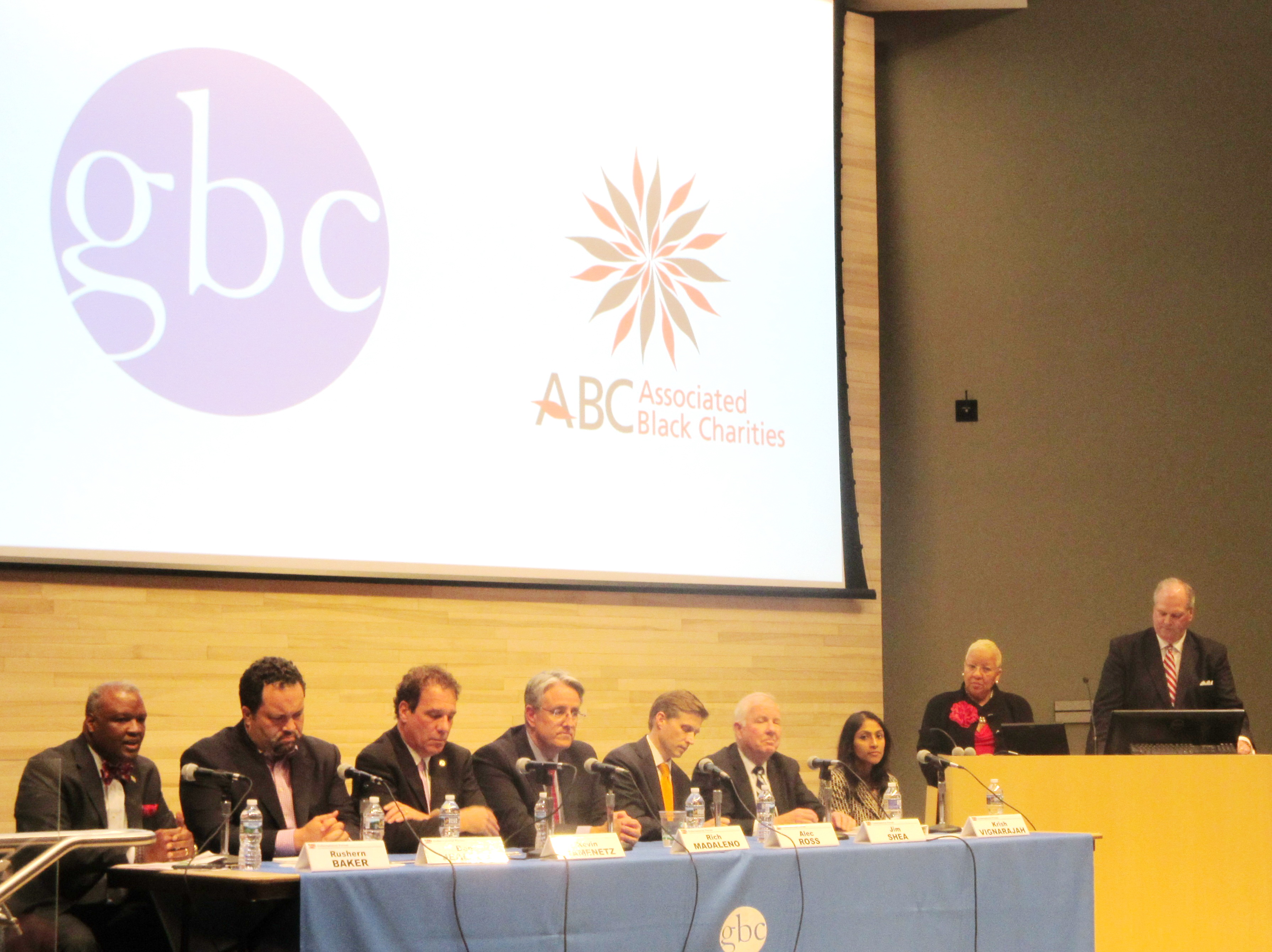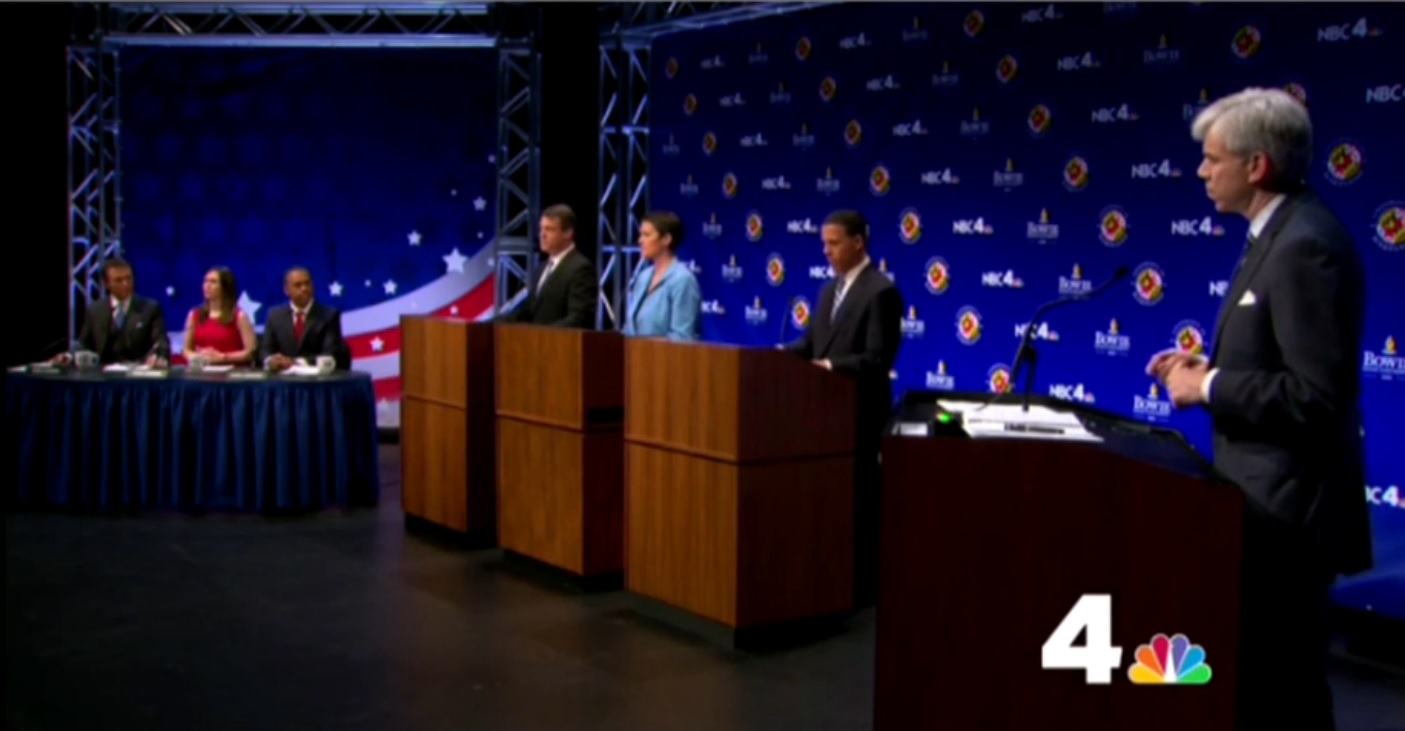By Megan Poinski
Megan@MarylandReporter.com
Last year, 5,522 state employees brought home paychecks that added up to $100,000 or more, according to salary figures from the Comptroller’s office. That’s about 6% of most full-time workers employed by the state and 383 more than in 2010.
Almost three-quarters of everyone making more than $100,000 were affiliated with the state’s university system. A total of 4,034 of the state’s $100,000+ earners work at a University of Maryland campus, the USM central office, the state’s other universities and colleges, or Baltimore City Community College.
MarylandReporter.com’s analysis was done from a digital list of 92,000 state employees and their 2011 salaries obtained from the comptroller’s office. Full-time employees with salary, annual and daily rates were studied for this analysis. Contract employees, employees with no salaries listed and employees from county courthouses were not included in this analysis.
Here is the full list of 5,522 who make $100,000 or more.
Medical school docs top paid
 All but two of the highest paid 25 employees work for the medical school at University of Maryland, Baltimore.
All but two of the highest paid 25 employees work for the medical school at University of Maryland, Baltimore.
The top-paid employee is Medical School Dean E. Albert Reece, who is paid an annual salary of $799,547. Following Reece is Stephen Bartlett, chairman of the surgery department, who is paid $785,046. Third is Bartley Griffith, chief of University Hospital’s cardiac department, making $771,611.
The fourth highest-paid employee is one of the two in the top tier who is not part of the medical school: UMB President Jay Perman, also a medical doctor, makes $710,000 a year. Following down the line, the next top salaried person who is not part of the medical school is USM Chancellor William Kirwan II, who makes $490,000 a year. Kirwan is the state’s 23rd highest paid employee. (The governor makes $150,000.)
College Park high on the list
The next highest paid employee who is not affiliated with the medical school is University of Maryland College Park President Wallace Loh, who is paid $450,000. Loh is 33rd on the list of best-paid state employees.
Top University of Maryland athletic coaches Gary Williams, who retired as the men’s basketball coach at the end of last season, Williams’ replacement Mark Turgeon, and Terp football coach Randy Edsall are all tied for 44th place with $400,000 base salaries. Women’s basketball coach Brenda Frese ranks at #67 with her salary of $364,648.
The listing from the comptroller’s office this year does not include bonuses or other incentives the coaches may have received that may have been included in last year’s figures.
Kirwan said that there is good reason why the university system has some of the highest paid employees in state government.
“Maryland wants to have top-rated academic programs,” Kirwan said. “We have to pay the compensation and the salaries to get the best talent.”
The highest paid non-university employee is Paul Wiedefeld, the head of the Maryland Aviation Administration and director of Baltimore-Washington Thurgood Marshall Airport. He makes $262,307 a year, the 265th highest salary in the state.
Figures don’t reflect source of income
University of Maryland Baltimore officials say that the amounts that the comptroller’s office says the professionals in the medical school are paid are accurate. However, the entire amount does not come from taxpayers.
Mike Lurie, spokesman for the university system, said that figures from the Comptroller’s Office tend to include research grants that doctors bring in, as well as some of the funds they make in their private practices. Lurie said that most doctors who work for the medical school also see patients in their regular practices outside of their teaching work.
Ed Fishel, the director of the university’s news bureau, said that 67% of UMB’s $1 billion budget comes from research grants and clinical care. Only 18% of the university’s funds, Fishel said, come from taxpayers.
“In other words, our doctors and researchers are bringing huge amounts of money into the Maryland economy,” Fishel wrote in an email.
Neither university system officials nor officials from the Comptroller’s Office could say why these funds are included in salary calculations. Central payroll employees said the figures provided were amounts paid out by the state.
Perman said that physicians at University of Maryland Baltimore teach 60% of the people who become doctors in the state. In order to keep that reputation and provide high quality health care instruction, Perman said that some of the world’s most innovative physicians work with the university.
“We have to be leaders in the health care marketplace to do cutting-edge research,” Perman said.
Agencies with largest proportion of well-paid employees
There are state employees making more than $100,000 in most departments throughout government. However, some departments have more top-earners than others.
Here are the average salaries in agencies with more than 500 employees.
According to an analysis of full-time salaried employees, the Board of Contract Appeals has the largest proportion of employees making six figures or more, with 60% in that top range — though the board only has five employees (three of them make $100,000 or more).
Looking at larger departments, more than a third of the salaried employees at the University System of Maryland’s main office (36%) make six figures. And one of the three employees at the Maryland Commission on Correctional Standards is paid more than $100,000.
Employees in the governor’s office have the next highest proportion of six-figure salaries; 26% of them are in the top tier. A quarter of the employees in the Maryland Energy Administration and the Board of Public Works (which only has eight employees) each make more than $100,000.
At least a fifth of all salaried employees at the University of Baltimore, University of Maryland Baltimore, the Office of the Capital Budget, the State Treasurer’s Office, the Chief Medical Examiner’s Office, the Secretary’s Office in the Department of the Environment, and the Health Access/Cost Commission make $100,000.
The average salaries in these departments are also some of the highest. According to an analysis of all annual salaries of employees, the average salary of an employee in the University System of Maryland’s main office is $98,703.
Some of the other departments with high average salaries include the Board of Contract Appeals, which pays an average of $89,067; the Maryland Health Insurance Plan, which has an average salary of $84,891; the Office of the Deaf and Hard of Hearing, with an average salary of $80,000 (with only two employees); University of Maryland Baltimore, which pays an average of $79,711; and the Secretary’s Office in the Department of the Environment, with an average salary of $79,381. Close behind these is the Health Access/Cost Commission, with an average salary of $79,042.
TOP 25 SALARIES
1. Edward Reece
University of Maryland Medical School dean
$799,547
2. Stephen Bartlett
University of Maryland Medical School surgery chair
$785,046
3. Bartley Griffith
University of Maryland Medical School cardiac chief
$771,611
4. Jay Perman
University of Maryland Baltimore president
$710,000
5. Bruce Jarrell
University of Maryland Medical School executive vice dean
$680,000
6. Jonathan Bromberg
University of Maryland Medical School surgery division head
$650,000
7. Vincent Pellegrini
University of Maryland Medical School orthopedics chair
$647,704
8. Mandeep Mehra
University of Maryland Medical School chair in medicine, chief of cardiology
$638,927
9. Andrew Pollak
University of Maryland Medical School chief of the division of orthopedic traumatology
$607,300
10. Sunjay Kaushal
University of Maryland Medical School director of pediatric cardiac surgery
$600,000
11. Scott Strome
University of Maryland Medical School director otolaryngology-head and neck surgery
$580,325
12. Peter Rock
University of Maryland Medical School director of anesthesiology
$576,501
13. Sanford Stass
University of Maryland Medical School pathology department chair
$574,378
14. James Brown
Former University of Maryland Medical School cardiothoracic doctor
$568,091
15. Robert Gallo
University of Maryland Baltimore Medical School director of virology
$552,289
16. Christopher Harman
University of Maryland Medical School director of obstetrics, gynecology and reproductive services
$531,000
17. David Zimrin
University of Maryland Medical School cardiac catherization lab director, leads interventional cardiological training program
$520,000
18. Rajabrata Sarkar
University of Maryland Medical School head of vascular surgery
$511,826
19. Robert Redfield
University of Maryland Medical School chief of infectious diseases; director HIV program
$510,820
20. Howard Eisenberg
University of Maryland Medical School chair of neurosurgery
$500,000
21. Johannes Bonatti
University of Maryland Medical School professor of cardiac surgery
$496,475
22. Claudia Baquet
University of Maryland Medical School associate dean for policy and planning
$494,000
23. William Kirwan II
University of Maryland System Office chancellor and CEO
$490,000
24. Nader Hanna
University of Maryland Medical School associate professor of surgery and head of surgical oncology
$484,828
25. Steven Ludwig
University of Maryland Medical School associate professor of orthopedics and chief of spinal surgery
$481,350









…and this is why I’m moving out of Maryland in 3 years to retire to a state which is much more senior, and retirement friendly. Like many counties in Maryland, the tax base is leaving to be replaced by non-income taxpaying “citizens”.
This article is about the top paid employees in the state. The data on top salaries combined with the article that reports 1/3 state employees make less than $40,000 would have been an more interesting and accurate report.
So that’s why medical school is so expensive.
And this is why college in general is expensive ( from the article ) : ” Almost three-quarters of everyone making more than $100,000 were
affiliated with the state’s university system. A total of 4,034 of the
state’s $100,000+ earners work at a University of Maryland campus, the
USM central office, the state’s other universities and colleges, or
Baltimore City Community College.”
And we need to increase funding to higher ed ?
Then, there are the tuition increases that happen every time state funding is increased…
What percentage of employed Marylanders make more than $100,000 per year? Answer: 12.5%.
(Source: US Census Curent Population Survey, Annual Social and Economic Supplement, 2010.)
It took me 5 minutes to find that. Don’t you think that would have been valuable context for the readers? Kind of changes the angle of the story, though, doesn’t it?
Reference to the doctors, their income is on par with the income they could earn in their private practice and as a heart patient I want them to be at the top of their game. Maryland is fortunate to have these heavy hitters in the world of teaching/training and research.
JobDoc,
I agree with you in part. Where I differ is that in the private sector, if I have a choice to use their services or not and if I use them, I pay for them myself via health insurance or out of pocket…And I can “shop around ” in some cases…
These positions are taxpayer funded with the taxpayer having no choice in what those in these positions are paid…